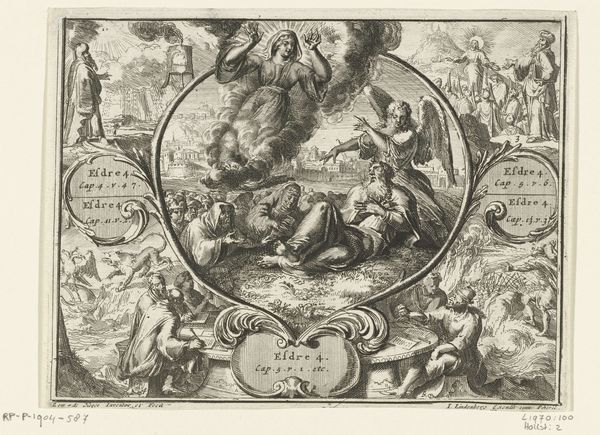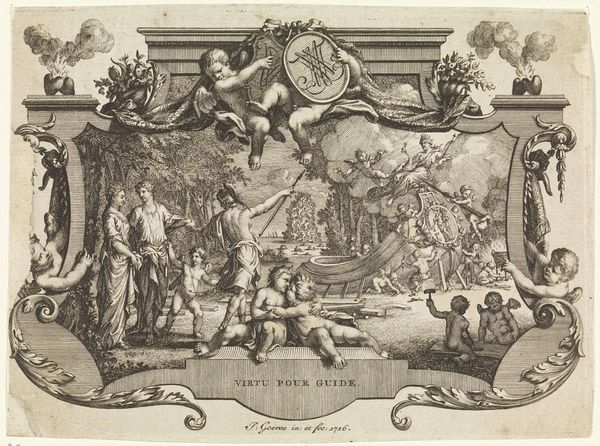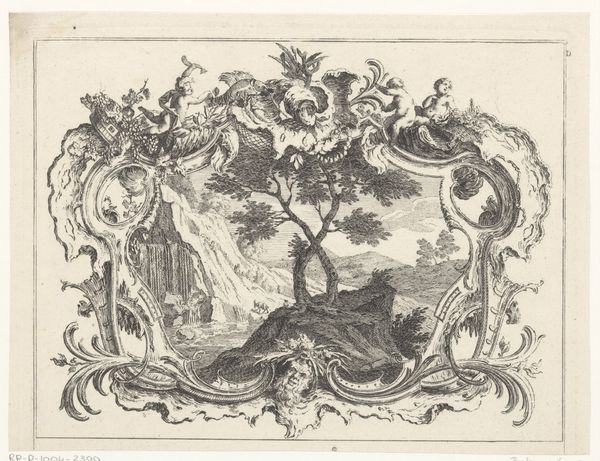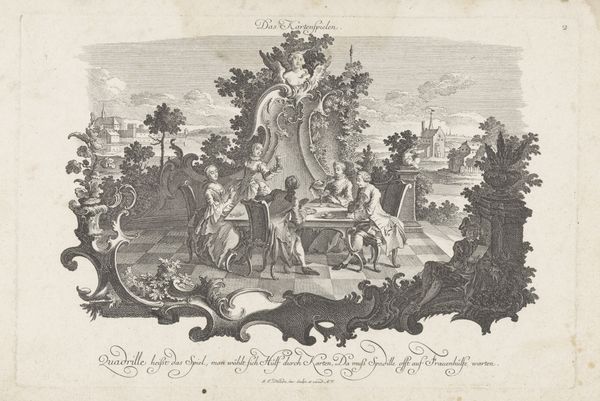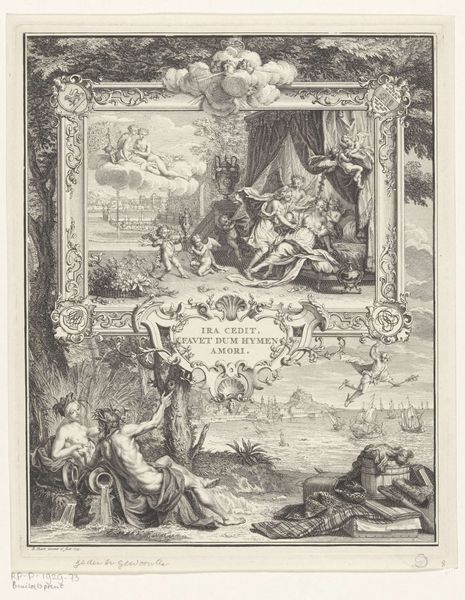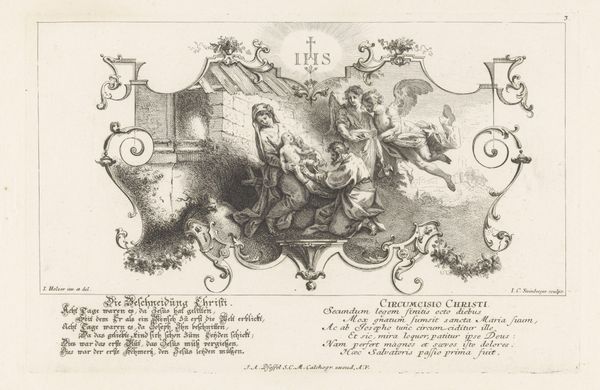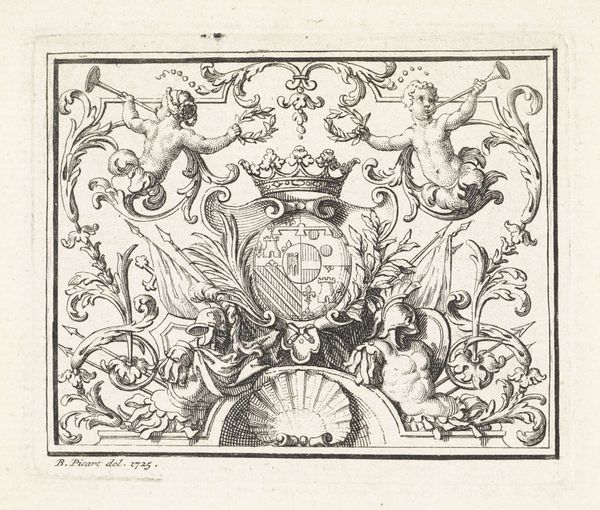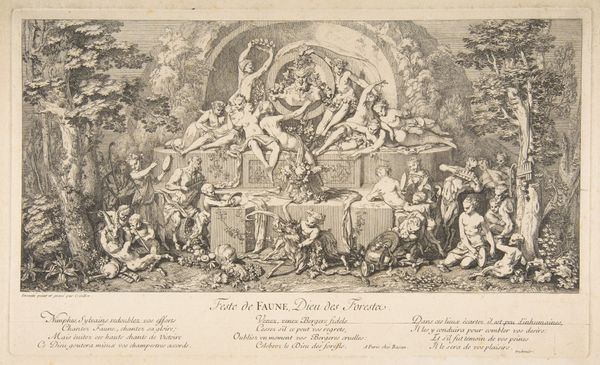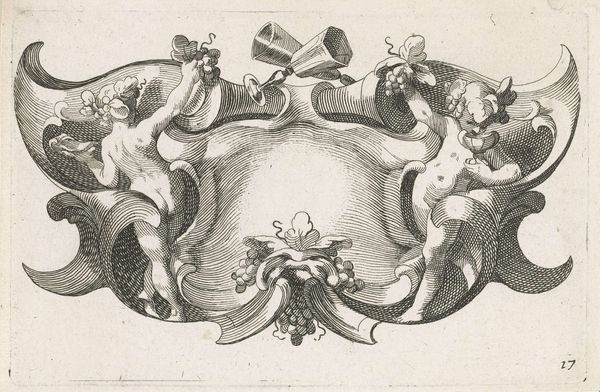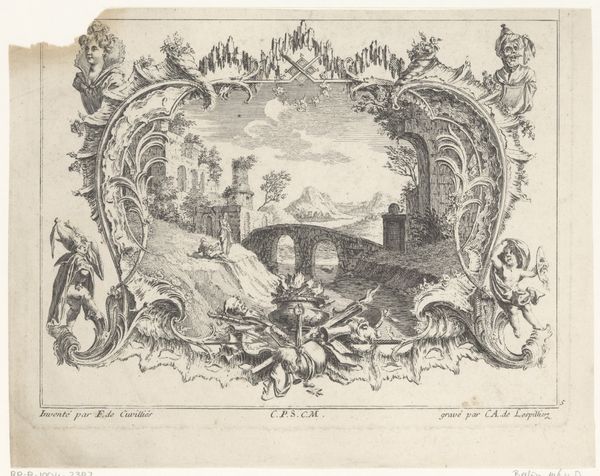
Cartouche van bloemen- en cosse-de-pois ornamenten rond landschap met zittende figuren. c. 1602 - 1670
0:00
0:00
clauderivard
Rijksmuseum
drawing, paper, ink, engraving
#
drawing
#
baroque
#
landscape
#
figuration
#
paper
#
form
#
ink
#
line
#
genre-painting
#
engraving
Dimensions: height 108 mm, width 151 mm
Copyright: Rijks Museum: Open Domain
Curator: This engraving, housed here at the Rijksmuseum, is titled "Cartouche van bloemen- en cosse-de-pois ornamenten rond landschap met zittende figuren.", dating from about 1602 to 1670. The piece is attributed to Claude Rivard. Editor: The ornate border framing that placid scene is jarring! All those densely packed floral elements... what kind of statement is being made by juxtaposing such dramatically different approaches? Curator: Precisely! The cartouche format itself became incredibly popular in the 17th century, used to frame and legitimize various images – think maps, portraits, even documents. Considering its widespread use, it’s hard to ignore how power structures of the era employed the cartouche to elevate certain narratives. Editor: And the "sitting figures" themselves… are they oblivious to this flamboyant construct surrounding them? Is this framing intentional in the socio-political sense? Or could the figures, arranged as if within a pastoral painting, symbolize an ideal that the burgeoning bourgeoisie tried to embrace, to distance themselves from rural lifestyles even? Curator: It might speak to those anxieties. Consider too, the materiality: engraving on paper allowed for wide distribution. Thus, examining ownership and consumption practices of the era could illuminate to what degree this sort of imagery impacted identity formation. Editor: But does this ornamentation overshadow the genuine value within? Is there perhaps a reading that it critiques such ostentation through its overwhelming excess, exposing artifice as artifice? Curator: It invites a crucial reflection on what art represents and for whom. Was it designed for instruction, or purely for decoration? Who was invited to participate in its message, and how was that invitation extended? This detailed interplay makes one think about contemporary parallels to such practices. Editor: The way the artist played with light and shadow – look how deeply etched some lines are while others merely suggest detail. One is pulled between being captivated and overwhelmed. I find that I see its initial, perhaps unintentional message clearly only after careful observation. Curator: And that itself echoes larger structures! Ultimately, it’s a lens to consider both then and now. Editor: Indeed; the social impact here is hard to miss, centuries later.
Comments
No comments
Be the first to comment and join the conversation on the ultimate creative platform.
